When you first chose the name Slim Jim Phantom and became the drummer in the Stray Cats, did you realise that you’d never be able to gain weight or lose your hair?
I have the same name as my father, as is the practice with the NYC Irish nobility. His nickname is Big Jim, so I became Slim Jim. When we got into rockabilly, everybody needed a nickname and mine stuck real good and tight. I did meet a guy in London much later, a heavy set lad and his name was also Slim… As for my Barnett Fair, we always said that we’d rather lose a limb than our hair.
The stray cats seemed like an all-American rockabilly band, yet your big success only came once you came over to England in the 1980s. What made it difficult to break America – your own country, and what did we have over here that made it easier?
Rockabilly was not a known genre around our neighbourhood in New York, and that style was non-existent. We were doing pretty well as young rockabillies and local eccentrics playing in the clubs, dressed to the nines 24/7, but we wanted the brass ring of making a record and to have an adventure. We had a few UK music mags and thought London was a good idea – we had heard about Teds and Punks and thought everyone was hip and cool there.
I always thought of the Cramps and the Stray Cats as coming towards something similar in the 1980s. Then psychobilly happened – were you part of that?
I think we were a bit ahead of that. The Stray Cats were never part of a movement. I mean, we made our own movement for a while. We were more mainstream, we were just trying to have hit records, and not be part of a small scene in any way. That’s not to say that if we’d found some rockabilly types in New York we’d never have left. There were a few, but it wasn’t a giant scene. Although after we put it back in the charts, especially in America… it’s like a huge underground thing now. They have all these festivals now. Back then, there might have been one of those great rock ‘n’ roll shows, with Chuck Berry, Little Richard. As a whole movement, I don’t think it was really there before.
I remember one guy saying, ‘You don’t mix a black leather jacket with brothel creepers,’ and we said, well why not? We had a pile of clothes in the corner, so whoever got the orange cowboy shirt and the leather trousers, that’s what you had that day.
Since about 2000, the rockabilly scene has been massive in Britain – is it the same in America?
There’s a couple of events, they mix it with the car shows, tattoo shows, but I can’t think of any one band that represents it – it’s more of a lifestyle thing.
That’s what I was thinking – in your day a scene was represented by a band with a sound; nowadays it’s represented by a look. And you just find the music for the look. Whereas I always thought with a band like the Stray Cats, you play the music, then you find the look.
Yeah, and there was a bunch of different things that inadvertently added to our success here. One of them was that, when we came here, we fell in with a lot of people, and in England, especially London, everyone was something: you were a mod, or a ted, or a ska boy, or a rude boy. Everyone had something that they were. Whereas where we were from, we thought anyone who had any style was in it together – it was us against the squares. So we mixed it all up. I remember one guy saying, ‘You don’t mix a black leather jacket with brothel creepers,’ and we said, well why not? We had a pile of clothes in the corner, so whoever got the orange cowboy shirt and the leather trousers, that’s what you had that day. As long as you were painting from the same palette, everything was cool. I see these rockabilly kids today and it all seems very traditional. I appreciate that angle but it isn’t how we did it.
Keith Richards had a velvet jacket and I thought, how cool to have a job where you get to wear a velvet jacket.
I liked that quote from the book about you going to your first punk gig in London, the Cockney Rejects, and a policewoman advising you to leave because you were teds.
That’s right, and she saved our butts by doing that! In America you couldn’t have found one person who knew what you were. I’m a musician, that was always the first thing. It wasn’t like I found a good haircut then started to play the drums. We got pretty good at the music and then found a style that we fell in love with, not the other way around. And I also liked other stuff than pure rockabilly clothes. Keith Richards had a velvet jacket and I thought, how cool to have a job where you get to wear a velvet jacket.
Did you use that stuff on your hair, Black & White Hair pomade? I remember it never washed out. I had to wait till my hair fell out to get rid of it.
I used to go to Kensington Market to get a haircut then not wash it for three months. They’d have to use Ajax to strip it down to dye it again. We used Murrays and then Nu Nile. That stuff was like gold back then.
So you’re not a Dapper Dan man?
No, and now they make stuff that’s as good as any of those but washes out.
You ran what sounds like the coolest bar on Sunset Strip for 20 years. Was that as fun as it sounds and did you make any money out of it?
Nah! It was love. I’d had a club before that, a big dancey one on Hollywood Boulevard, and then the Cat Club came by chance; I knew someone who was leaving and the lease was due and the liquor licence hadn’t been attached. I’d lived on Sunset Boulevard for along time, it’s my patch, so we just got involved. I In a funny kind of way, I was getting back into the nightclub business to stay closer to home, because I could walk there. And as wacky as it sounds, it was good for my kids; they did their homework at the desk in the Cat Club. I didn’t know of any straight kind of job where you could still be in your element.
It was good for a while, then it became known as a live place. When I first opened it I wanted it just to be a swanky cocktail lounge, with velvet couches and a leopardskin carpet, martinis… and I was getting killed! So one night I brought in some equipment and some friends, moved the couches out of the way and then played. There was a good crowd that night and it just kind of evolved and was a live music venue for about 20 years.
So while your TJ son was doing his homework there, did you also teach him to play the drums?
Yeah, he’s very good at playing the drums, he’s been in a 100 bands, and now he’s a chef too. He turned out to be a normal guy, although he was brought up in the rock ‘n’ roll lifestyle, always on the road with me when he was young. But guys I know who worked regular hours hardly ever saw their kids. So our alternative life makes it, in a strange way, more normal. I had to take him with him, it wasn’t even like modern parents. If I was away in Sweden or London, he would go to my parents in New York, and they had to grow up that way. They learned how to fly on their own and they had their passports around their necks; the stewardess would take care of them.
Does TJ stand up when he plays the drums too?
No, he sits down, he can do all that heavy stuff like John Bonham.
Can I ask a few technical questions about playing drums?
Sure, I can talk about drumming all day long!
You’re a left-handed drummer who stands up – how do you play the bass pedal, or don’t you?
I play the bass pedal with my left foot. I have to lean back a little on my right for the balance.
I read in the book that you’re ambidextrous?
Ambidextrous would be good. I do certain things with certain hands; I can’t do everything with both hands. So I write with my right hand but I play drums with my left hand. Tennis and golf, left hand, but when I play pool, I play that right handed.
So if you had to, could you play the drums right handed?
I could busk it for a couple of numbers. I’ve had to play right handed, sitting down a few times.
So you do sit down sometimes?
Yeah, when no-one’s looking. I prefer to, it’s kind of easier. Once you do something that’s popular and you get a name for it, you stick to it.
There’s a list at the end of the book of all the drummers you admire. I recognised some of them, for example Clem Burke. Are you a big fan of his?
Yeah, he’s a good friend too. He’s played the Cat Club a few times. One of the things about running the club was that, no matter how much I wanted to stay at home and not go on the road, you can’t pay the rent in a nice neighbourhood from running a club, so I still had to go on the road. But the nice thing was that there was always an A-list guy in the chair when I couldn’t make it. Every Thursday night there was a jam session. The drum chair was always easy to fill; I might have been in Budapest. So Clem Burke would always play when I wasn’t there; or Eric Singer, who plays with Kiss; Tommy Clufetos, who now plays with Black Sabbath.
What about from the punk movement, who were the drummers who stood out for you?
Nicky, or “Topper” Headon from the Clash, he’s an excellent drummer. In the same way that I found a musical style, rockabilly, that suited my drumming style, Topper was a really good drummer, then he found the Clash and that suited how he could play. Drummers tend to stick together, Clem, Topper, Zack Starkey, it’s kind of a different thing to the rest of the band.
Maybe we are tribal; even more base than bass. The heartbeat of the band. I never really met a drummer I didn’t like. We’re more easy going.
Do you think that’s also true of bass players, keyboard players? Or is just drummers who have that sense of being a tribe?
There’s something different about drummers. Maybe we are tribal; even more base than bass. The heartbeat of the band. I never really met a drummer I didn’t like. We’re more easy going. When a band hasn’t played for a long time, it’s always the drummer who’ll say, ‘Sure, I’ll play!’
I got the impression from the book that things are not particularly sweet between you and the other former members of the Stray Cats, Lee Rocker and Brian Setzer?
It’s funny, but just within the past week this has changed. I was on my way to the Roxy and the doorman said, ‘Hey, congratulations!’ The long and short of it was that Brian had done an extensive interview for one of the big papers in L.A., saying how much he loves everybody and how we’re going to play in the near future. He and Lee have spoken and everything’s cool.
Because they were the two that always had the rocky relationship, weren’t they?
Yeah, well we’ve known each other since we were seven years old. Lee and I were in pre-school together. Brian was a couple of years older than us, which mattered then but doesn’t matter now. If you’re 87 or 88 it makes no difference, but when you’re 13 and 15, it does. Last time Brian called me was during the World Series, because we both like baseball, and we just started as if in mid conversation. Then I read this thing in the paper and, who knows? Everyone’s fit…
Everyone’s still got their hair.
Exactly! How am I going to go up to the hardest teddy boys, German rockabillies and say, we’re not playing together because he’s mad at him, and there was one time when, etc. How’s that gonna sound? I mean, there are quite a few bands that had more hit records than we did, but I think we were one of the ones that made a pretty big dent in it all.
What was the first rockabilly music you heard?
With me it started with the Beatles and the Stones; you look closely at the credits and think, who’s C. Perkins? On blues records, you wonder who W. Dixon is from the Allman Brothers album we had. I had some older cousins and they had records; who can afford records when you’re eleven years old? I’d borrow the records and look at the liner notes. It all comes back to what I call the nerding out; once I found my way into rockabilly, then I wanted to know who Elvis liked. You can go back as far as you like.
I think people sometimes get it wrong where they feel they have to take one instead of the other. I like the Rolling Stones and Gene Vincent. I like Buddy Holly and I like the Beatles. And I liked the Clash and then Adam and the Ants.
So you started out listening to the old rockers like Jerry Lee Lewis and then, 20 years later, you’re on a television show playing drums with Jerry Lee Lewis. Your description in the book of your first meeting with him, I think in a dressing room, was incredible.
Yeah, I was at the Jerry Lee Lewis gig in about 1983 with the English tailor Glen Palmer. He worked on Savile Row and then Granny Takes a Trip. He’s a real character. You talk about these blues legends that will never happen again; he’s the guy from the tailoring world that will never come again, you know, like Tommy Nutter, one of those guys. He’s still around, I still speak to him – he’s a character out of Dickens. He lives in America, he’s a big Jerry Lee fan, and we’re just in the audience like anyone else. Jerry Lee’s tour manager came over and said, ‘You the Stray Cats boy?’ So we went backstage, knocked on the dressing room door, and this voice says, ‘Come on in, it ain’t locked!’ It was a little dressing room and there he was, The Killer, with this big girl on his lap all dolled up like Marylin Monroe. And he just stood up saying, ‘Hey, it’s the Stray Cats boy!’ and she fell on to the floor. It was a very strange scene, man.
After our conversation he turned the lights off in the room, and I could hear the girl screaming, and I heard him laugh the devil’s laugh, so I just felt my way to the door knob and got out. Then I didn’t see him again for ten years. And then my friend Jerry Shilling, who had worked with Elvis for a while, was managing Jerry Lee, and he called me to be on that TV show. Then I didn’t hear from him again for a couple of years and then he called me to go back on the road with them.
So was it Jerry Lee who made that decision at your first meeting that he wanted you to be his drummer?
I would like to think so, but I’ve met the guy ten times in my life, and every time I meet him I’m not sure that he knows who I am! Like when we did the tour, I’m not sure if he realised it was me who’d done the TV show a few years before that. And when I played with him a few years ago, I’m not sure he knew that I was the guy who used to go on tour with him. I’m just not sure.
He has got a faraway look in his eyes. Does he inhabit another dimension that we’re not aware of, do you think?
Yeah, I think so. He’s really showbiz. We were doing these gigs and there was no set list, no clock, no nothing. And at 59 and a half minutes he would kick the piano stool away, do the thing with his feet, then he’d leave the stage and the band would ride out the end of the song. I’d go in the dressing room and look at the clock: one hour and one second from when we’d started. And that’s with no set list!
In 1984 you married Britt Ekland, who was 19 years older than you. Tell us about proposing to Britt Ekland, knowing that she’d been married to Peter Sellers and had a relationship with Rod Stewart.
I had known and lived with Britt a couple of years before we were married. We had an immediate attraction and connection, so marriage seemed inevitable and we would have done it sooner – those years were very busy and we waited for a little gap in the action to do the vows. Everyone’s past is their own, I didn’t think too much about that kind of stuff. I had my own life to concentrate on.
Today’s hipster movement seems so far from the days when the Stray Cats were around. Has the age of rock ‘n’ roll passed us now? Is making artisan bread the new rock ‘n’ roll? Can you imagine Chuck Berry baking bread? Jerry Lee Lewis kneading sourdough?
I’m far too lazy for such domestic endeavors. I do like fresh bread, but there are some top notch bakeries on my patch – plus I can’t imagine those original cats making their own sandwiches, let alone baking the loaf from scratch. There will always be rock and rollers; whether they’re as cool as our favourites, I doubt it.
We’re going to wind up with the most important topic, which is of course clothes. You mentioned starting out with lots of thrift store stuff, but do you now get clothes made bespoke?
As soon as I was able to have clothes made, I have. I met Glen Palmer, and he’s made clothes for everybody; the Getty guys, Tom Petty, the Stray Cats, every rock ‘n’ roller around.
Has he got a specific look?
Yeah, well this is one of his, what I’m wearing today. You know, rockabilly cowboy meets Doc Holliday, but he’ll add some lamé somewhere. He’s one of those cats who can make an outfit for Cher and then also make a shirt for Prince Charles.
Like Tommy Nutter, who made suits for beatniks and aristocrats in the same building?
Yeah, not just costume stuff, he’s a skilled tailor. In the past I’d go to Glen and say, let’s try to combine Hank Williams with Brian Jones. We’d maybe use Grand Ole Opry for inspiration.
So you would actually work with him, not just leave him to make all the decisions?
Yeah, but he would always choose the lining or whatever.
The traditional Savile Row tailors decide for you. You go in there, they look at you and tell you what they’ll make for you.
Sure. When I go to the doctor for an operation, I’m not going to tell him what to do! You just know you’re gonna have the right surgery. And it’s part of the fun, when you see that they chose orange lining for the vest – I mean waistcoat – something you might never have thought of.
I’m glad you called it a waistcoat.
Yes, I was very careful! Don’t want to get in trouble with your readers. There’s a shoe guy too, a British guy called Colin Johnson. He makes bespoke shoes, but rock ‘n’ roll shoes. If you want green suede on top of a crepe sole, or if you want to get a Dr. Marten’s sole with black patent leather, he can do it. Once they have your measurements, you just call them.

Is it a bespoke service, with prices like John Lobb?
Not really. They’re only a couple of hundred bucks a pair. It’s bespoke in the way that, a month later you’ll get them and forgot that you ordered them. He’s an eccentric. They’re artists, these things take time.
There’s a fun project I’ve started to do. There’s this old shirt brand called Da Vinci, been around since the forties. There’s a lot of historic evidence of Elvis Presley wearing their stuff, and Jerry Lee. They made those shirts that had a short sleeve, maybe a diamond on the pocket, maybe an Argyle pattern. We used to call them barbecue shirts.
Like a bowling shirt but smarter?
Right. They started in the forties and kept going into the sixties, when they made cowboy shirts that people like Clapton and Lennon would wear. So they’ve reactivated the brand, and they’re remaking all the old patterns and fabrics, with some new stuff – and they’ve chosen yours truly to be the spokesman for them. I’ve seen some samples and it’s really cool stuff.
That can sometimes go wrong, when you get an old company relaunched. Abercrombie & Fitch is the worst example. They used to make safari suits for Ernest Hemingway and now…
This English guy called Chris Wicks has relaunched another old company called English Laundry, and he really knows his history and he loves it. A lot of these English guys, like Lloyd Johnson and Pete Golding love old juke boxes and Harley Davidsons and Corvettes, they love all the cool American stuff.
Is this why you did so well in London, because that interest in rockabilly was already here? Was Johnson’s already down on the King’s Road when you arrived? American Classics next door?
Lloyd saw us on the street and thought we were French rockers! He stopped us and we told him we were from New York, so we went to his store and became friends. That was 35 years ago and I’m still buddies with the guy.
So Da Vinci was originally founded by the Lansky Brothers, who made all the clothes for the original R&B guys, but Elvis sought them out because he was a hip guy; he was going on the other side of the tracks, watching what the R&B guys were doing, and he took those ideas to the other side of the tracks, mixed it with hillbilly – and the fashion as well.
I read that he also went to Nudie of Hollywood too. Did you ever go there?
Yeah, that was later on.
Didn’t Elvis go to them for his gold lame suit on the famous record cover. But apparently he hated it, Colonel Tom Parker insisted on it.
Well, they made him a lot of stuff.
On the way to do the photos, Slim Jim confessed a liking for Princess Diana memorabilia, but had noticed a marked absence of it in any London souvenir shops.
Do you think there is some sort of conspiracy to write Princess Di out of British Royal history?
I have always been a true fan of your Rose of England, and this observation is made from a place of genuine admiration. I would like to say, without any conspiratorial connotations, that Princess Diana merchandise is very hard to come by in traditional, mainstream outlets in central London. If this sounds like folly, I propose a challenge to Chap readers: look for a Princess Di postcard or tea towel in any souvenir shop and report your findings to fellow observant, my chum, Gustav Temple.
Later that day Mr. Temple discovered a Princess Diana mug in a souvenir shop on Portobello Road. It was posted to Mr. Phantom as a gift. Readers are invited to send photos of any Princess Di merchandise spotted on their travels to chap@thechap.co.uk


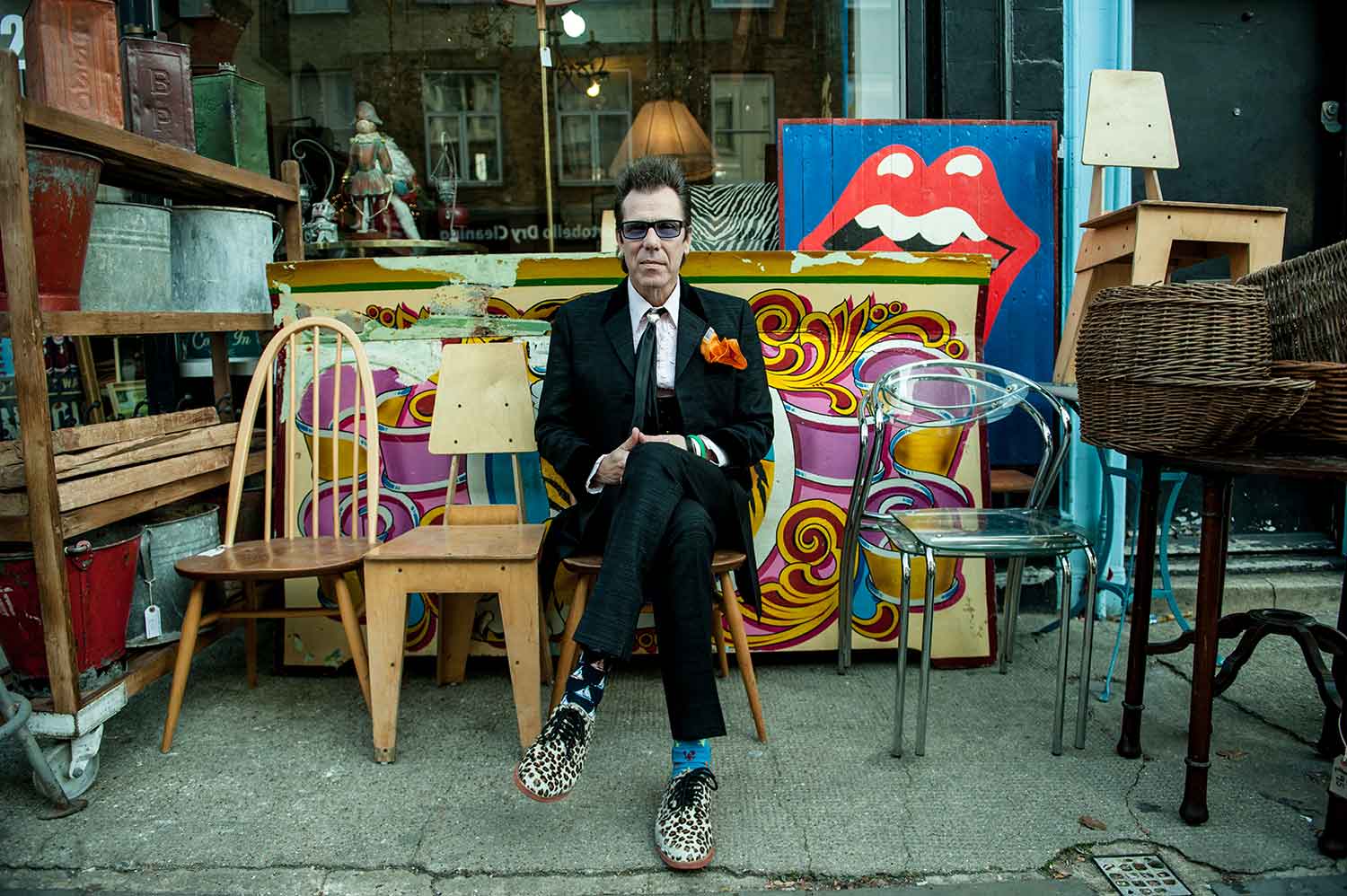




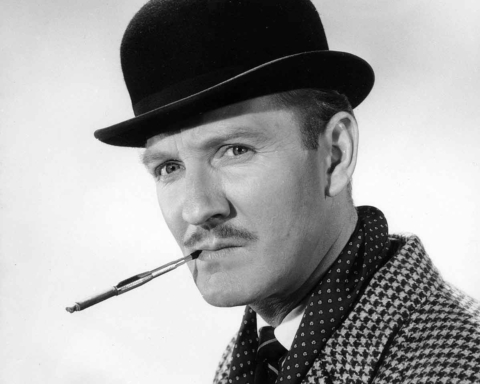
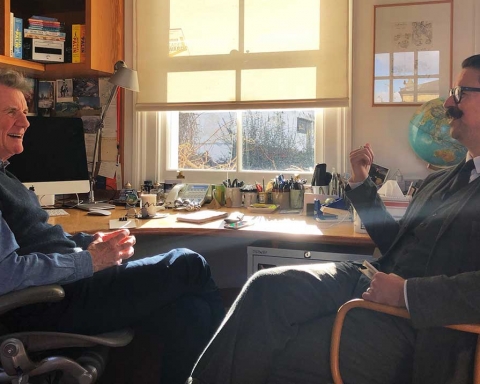
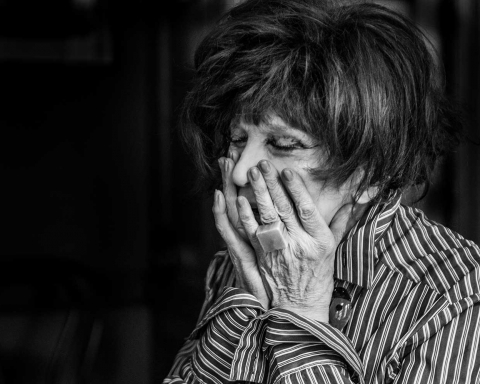
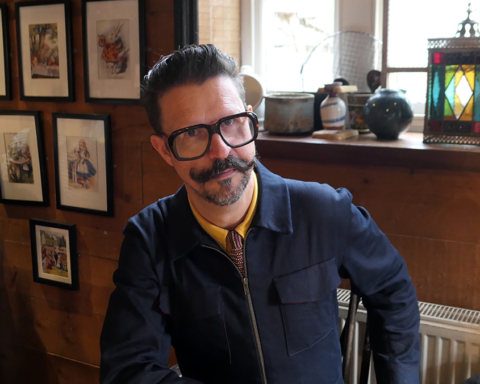
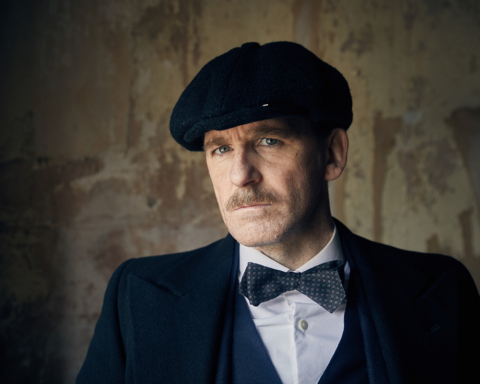
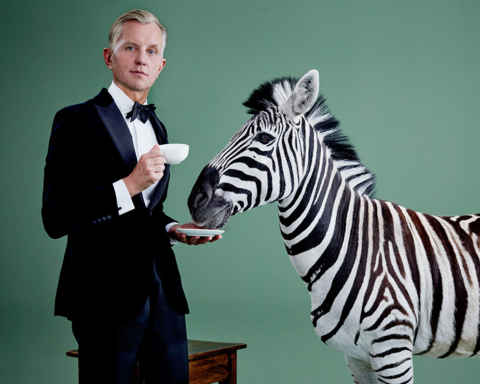

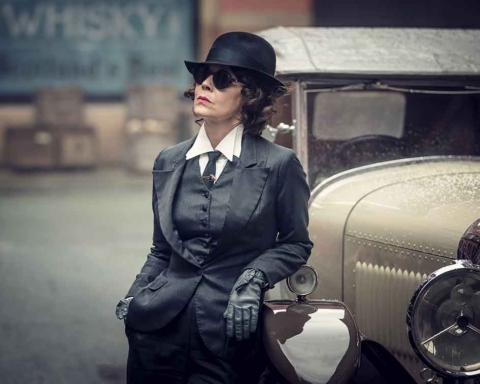
[…] already featured in the pages of the Chap include Vintage Egyptologist Colleen Darnell, Stray Cat Slim Jim Phantom and those gathered every year in Washington to celebrate Seersucker Social. Our regular American […]